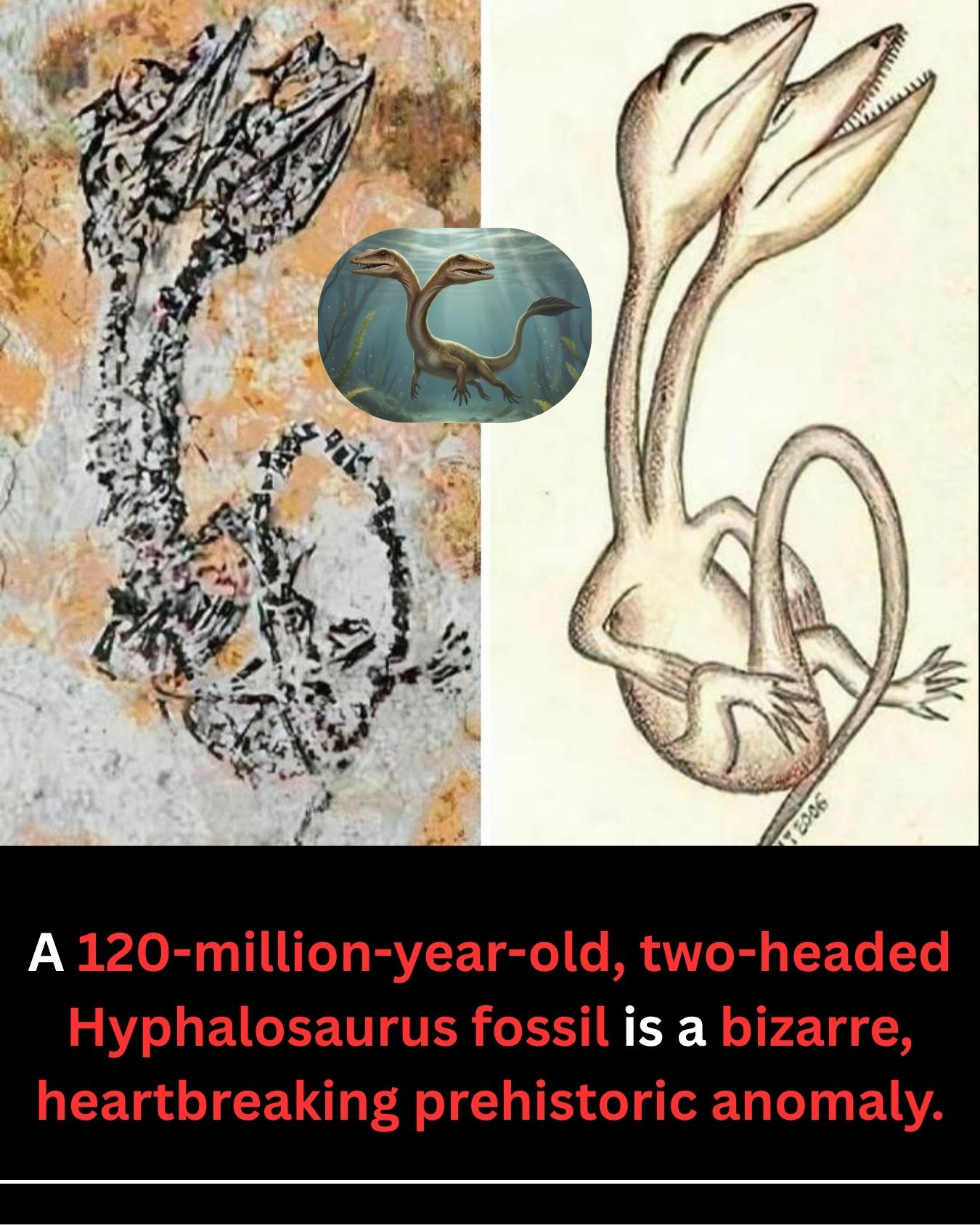
A Glimpse into a Prehistoric Anomaly: The Two-Headed Dinosaur of Ancient China
Imagine a creature straight out of mythology—a small, serpentine-necked dinosaur with not one, but two fully formed heads, moving as a single being through the dense undergrowth of a Cretaceous forest. This isn’t a legend; it’s a fossil. Discovered in the world-famous Yixian Formation in China, the fossil of a two-headed Hyphalosaurus represents one of the most rare and captivating paleontological finds in history, offering a heartbreaking and unique window into the biology of prehistoric life.
The Hyphalosaurus was a small, aquatic reptile, not a true dinosaur but a choristodere, often described as a “crocodile-newt” due to its long neck and semi-aquatic lifestyle. The Yixian Formation is renowned for its “Lagerstätte” conditions—environments of exceptional preservation where fine ash and sediment captured incredibly delicate details, from feathers to skin, creating snapshots of an entire ecosystem. It is within this geological time capsule that this extraordinary individual was preserved.
This animal was not a new species, but a case of a congenital condition known as axial bifurcation—what we commonly call conjoined twinning. This occurs when a single embryo begins to split into identical twins but the process is not completed. The result, in this case, was a single body with two separate necks and skulls. For this tiny Hyphalosaurus to have reached the stage of fossilization, it almost certainly hatched, as the fossil shows well-developed bones in both heads and necks. However, in the harsh reality of the prehistoric world, such a condition would have made it incredibly vulnerable. Coordinating movement, feeding, and evading predators would have been immense challenges, making its short life a remarkable feat of survival against the odds.
The scientific value of this fossil is immense. It provides the earliest known evidence of conjoined twinning in the archosauromorph lineage, which includes dinosaurs, pterosaurs, and crocodiles. It proves that the same developmental processes and biological errors we see in animals today were occurring over 120 million years ago. This two-headed reptile is more than a curiosity; it is a poignant and powerful reminder that the ancient world was filled with individual lives, each with its own unique story of struggle, survival, and ultimately, the indelible mark it would leave in stone.






